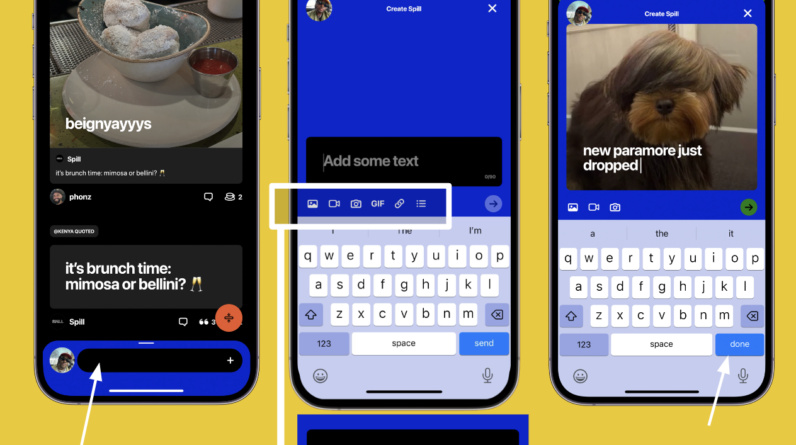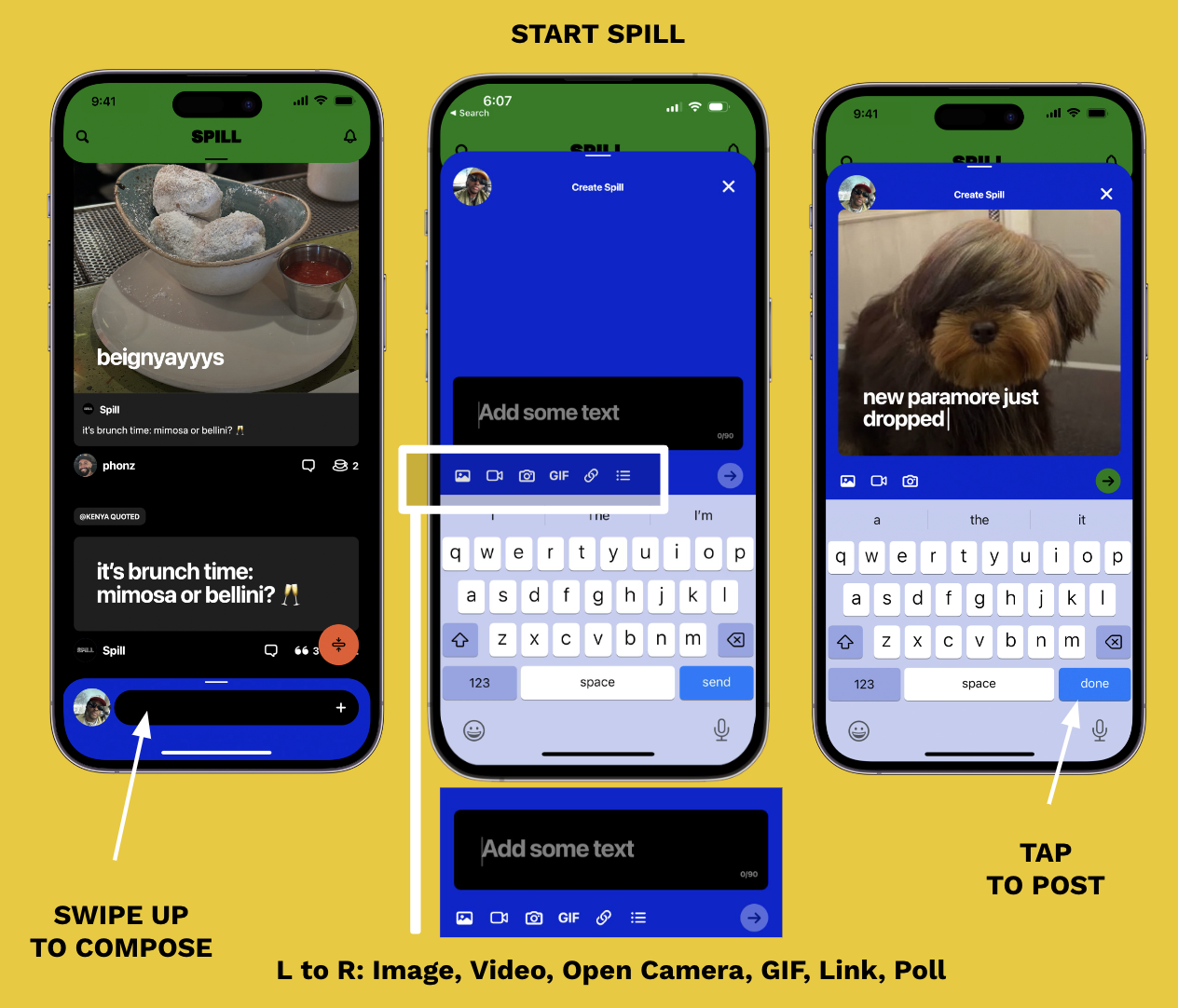
[ad_1]
From a team of ex-Twitter employees, the new social platform Spill launched in an invite-only beta on the App Store.
It’s been quite the year for Spill CEO Alphonzo “Phonz” Terrell. This time last year, he was global head of social and editorial at Twitter, a company that had not yet been sold to Elon Musk. Since then, he was laid off, started a new company and raised a $2.75 million pre-seed round.
Spill is a visual-first, multimedia microblogging app with an interface that looks kind of like Tumblr. When you open the app, you land on a feed, which includes recent posts from people you’re following (or, in the app’s language, “sipping”), as well as algorithmically served posts. From there, you can pull down a top menu, which shows trending posts and hashtags, like #spillionaires ,#zaddiesofspill and #baddiesofspill, which have all emerged as early monikers for the app’s users. From the bottom menu, users can post text, gifs, videos, photos, links and polls.

Image Credits: Spill
What sets Spill apart from legions of Twitter competitors is its deliberate mission to build for diverse communities from day one rather than as an afterthought.
Terrell says that the driving ethos behind Spill is that “building for underserved culture drivers would create a superior platform for all.” During its alpha phase, Spill deliberately sought out Black and queer creators to onboard to the platform, since these users are often the ones creating the trends and memes that the rest of the internet adopts. This outreach comes across as organic, since the people building Spill are part of these communities themselves.
“On every other platform, culture drivers — Black and Brown folks, marginalized folks, queer folks — have had to kind of elbow to create space,” said Kenya Parham, who Digital/news/kenya-parham-spill-app-1235561891/” target=”_blank” rel=”noopener”>joined Spill in March as its global VP of community and partnerships. “We’re starting off with them at the front of the line, and we think that’s going to create a really healthy ecosystem.”
Parham previously ran The Legacy Firm, where she consulted with studios like Warner Bros, MGM, Sony, Lionsgate and Amazon on cultural competency in movie marketing campaigns. With both Parham and Terrell’s connections in the culture sector — Terrell used to be a Digital marketing director at HBO — Spill is being strategic about how to use media sponsorships to drive revenue. Spill launched with a partnership with “The Blackening,” a new horror movie with an all Black main cast.
The need for an app like Spill has become even more obvious as other Twitter alternatives like Bluesky reckon with content moderation issues. A Jack Dorsey-backed app building toward decentralization, Bluesky strained its relationship with Black users after failing to moderate threatening comments toward a Black woman, who had previously played a prominent role in bringing more people of color to the app.
Spill will surely face content moderation disputes of its own, especially as the platform grows. One way Spill hopes to encourage good behavior is by giving users a “rep score” — if your score remains high, you can get access to new features or other benefits.
“We wanted to incentivize the positive, nontoxic behavior and really reward people for being consistent, active, contributing members to the platform without necessarily having to feel like you need a massive follower count,” Terrell said.
Terrell added that scores like this exist internally in most social apps — they just aren’t shown to the user. On Spill, you can see your rep score, but other people cannot see yours.
Spill is still very much in its beta stage, but the app has some ambitious plans for the future. Spill is building its own custom large language model for content moderation, since existing models are often built without the ability to understand Black dialects like AAVE. The platform also plans to add in blockchain-based creator features in order to reward users who originate viral trends.
“Spill is an app for everybody,” Parham told TechCrunch. “We’re just making sure that we’re demonstrative about who we’re centering, and who we’ve built all these protections and features for.”
[ad_2]
Source link






